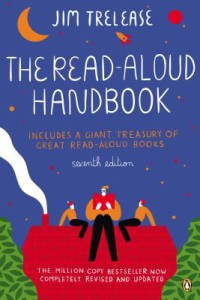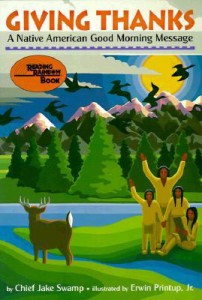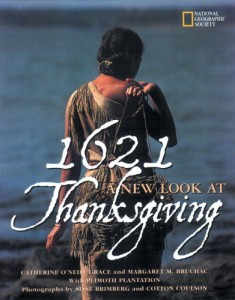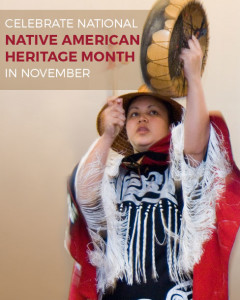NO YETI YET written and illustrated by Mary Ann Fraser
It’s a perfect day for a yeti hunt, and off the boys go! What does he look like? How will he sound? Does he live in a cave?
As the boys romp in the snow, young readers are invited into a compelling, original story, reminiscent of “Going on a Bear Hunt.” Fun word play and an engaging structure in which author/illustrator Mary Ann Fraser breaks the “fourth wall,” invite readers into the story. Kids will discover the Yeti long before the protagonists do. It’s so much fun!
Today, it’s a pleasure to welcome Mary Ann to ReaderKidZ to talk about her latest book, NO YETI YET.
Dianne: Can you talk about the genesis of this story? Did you know from the beginning that the book would use a sort of Yeti hide-and-seek structure?
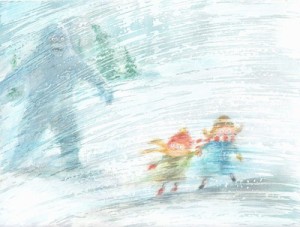 Mary Ann: NO YETI YET began as the repurposing of an earlier book that sold but never made it to the printing press. In the original version, a boy who keeps many pets becomes a pet for a bigfoot. I tried to resell the book but with no success. My agent, Abigail Samoun with Red Fox Literary, suggested I write a story based on the bigfoot character. But “yeti” is so much more fun to say, and so I made the switch. Although a yeti is a cryptid, a word derived from the Greek word Krypto meaning “hide,” the idea for the hide-and-seek structure evolved out of the question, “Do you see a yeti?” and the repeated response, “No yeti yet.” So in this case the language led to the visual concept.
Mary Ann: NO YETI YET began as the repurposing of an earlier book that sold but never made it to the printing press. In the original version, a boy who keeps many pets becomes a pet for a bigfoot. I tried to resell the book but with no success. My agent, Abigail Samoun with Red Fox Literary, suggested I write a story based on the bigfoot character. But “yeti” is so much more fun to say, and so I made the switch. Although a yeti is a cryptid, a word derived from the Greek word Krypto meaning “hide,” the idea for the hide-and-seek structure evolved out of the question, “Do you see a yeti?” and the repeated response, “No yeti yet.” So in this case the language led to the visual concept.
Dianne: The title, NO YETI YET, has such a wonderful “ring” to it. And the choice to use short dialogue, alliteration, rhyme, and repeated phrases like “Nope. No yeti yet.” guarantees a wonderful read-aloud. Student writers often don’t realize that careful attention to word choice doesn’t just happen. Can you talk about writing NO YETI YET, and in particular, your revision process? Did you tackle the words first, the pictures first, or go back-and-forth between the two?
Mary Ann: My usual way of working is to first put on my author hat and tackle the words. They have to be jiving or there is no point in moving onto the art. The use of literary devices along with rhythm is intended to make the story engaging and fun to read aloud. The plot and story structure cement it all together. After I’m 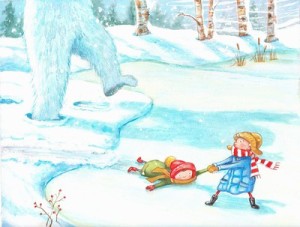 comfortable with the manuscript, but usually before it’s completely to my satisfaction, I begin developing a storyboard, tweak the words a bit more, and then change into my illustrator hat. Once I have a sketch completed for each page, I’ll spread them all out so I can see the book as a whole. This is often when the real back and forth between words and images takes place. Everything needs to be working in harmony. No lazy words. No pictures that don’t move the book forward or expand upon the text.
comfortable with the manuscript, but usually before it’s completely to my satisfaction, I begin developing a storyboard, tweak the words a bit more, and then change into my illustrator hat. Once I have a sketch completed for each page, I’ll spread them all out so I can see the book as a whole. This is often when the real back and forth between words and images takes place. Everything needs to be working in harmony. No lazy words. No pictures that don’t move the book forward or expand upon the text.
Dianne: Your work includes fiction and nonfiction, both books you’ve written and illustrated, as well as books you’ve illustrated for others. Are there differences in your process between illustrating nonfiction vs. fiction and illustrating your own words vs. the words of another author?
Mary Ann: The major difference between illustrating fiction and non-fiction is the depth of research required. I use visual references for both but must be more thorough for the non-fiction plus there is usually the added bonus of back matter. When illustrating my own words, the process is much more fluid. There are the few occasions when I have requested a text change from another author, but only when I felt it would make a drastic improvement in the book as a whole. Always I want to respect the author’s vision while enriching it with my own ideas for the visuals. No matter how a book is born, it should be the result of a happy marriage between the text and images.
Dianne: What can readers look forward to next?
Mary Ann: I currently have several projects in the works, all at different stages. I am particularly excited right now about a picture book on Alexander Graham Bell, in part because I will be creating the art using an entirely new technique, something which can be both scary and exhilarating all at the same time.
Dianne: Sounds exciting, Mary Ann. Thanks for stopping by ReaderKidZ!
To learn more about Mary Ann and ALL her books, visit her website HERE.








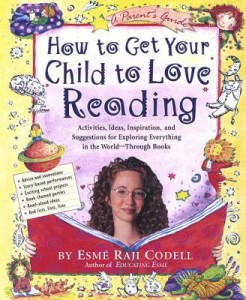 demonstration of the joy of a good book and as a tool for parents and teachers to model the reading process. Routman writes that reading aloud is a perfect way to “demonstrate thinking aloud – predicting summarizing as you go, working through tough spots.” (31) She suggests that reading aloud can be an opportunity to address pacing, model rereading for clariforing theication, make connections to
demonstration of the joy of a good book and as a tool for parents and teachers to model the reading process. Routman writes that reading aloud is a perfect way to “demonstrate thinking aloud – predicting summarizing as you go, working through tough spots.” (31) She suggests that reading aloud can be an opportunity to address pacing, model rereading for clariforing theication, make connections to 